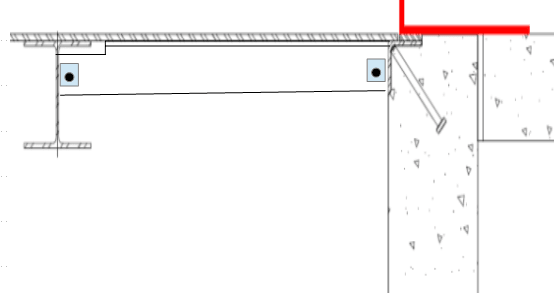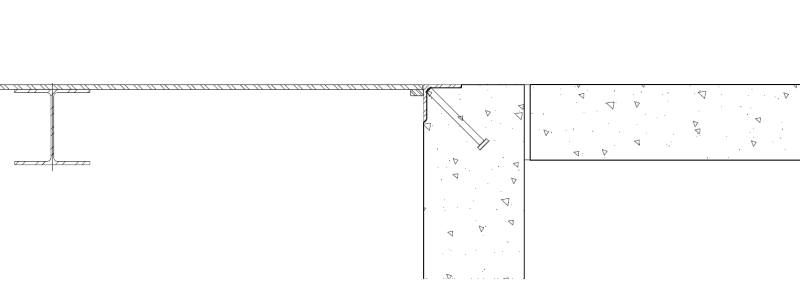TeemoshenksEIT
Structural
- Jul 30, 2020
- 15
I am designing an electrical trench with floor elevation at -4'-00". This pit has a false floor at elevation 0'-00", for which I have placed beams to pick up electrical equipment and steel plates.Some of the equipment are near the trench wall and hence I need embedded angles in the trench wall to which I am welding another angle that will pick up the equipment along with the floor plates. For the connection of the angle to the embedded angle, what I have thought of is to make slotted holes every 12" along the connecting angle and plug weld it to the embedded angle. I have attached a quick drawing I made to show you guys what I mean.
I have a couple of questions:
1. How do I check the capacity of the embedded angle? Do I check anchorage for this?
2. As the connecting angle (supporting the equipment) is laterally restrained, I can't see it bending. However its toe is in compression so Local leg buckling and leg yielding is possible, right?
Thanks for the help everyone.
I have a couple of questions:
1. How do I check the capacity of the embedded angle? Do I check anchorage for this?
2. As the connecting angle (supporting the equipment) is laterally restrained, I can't see it bending. However its toe is in compression so Local leg buckling and leg yielding is possible, right?
Thanks for the help everyone.



